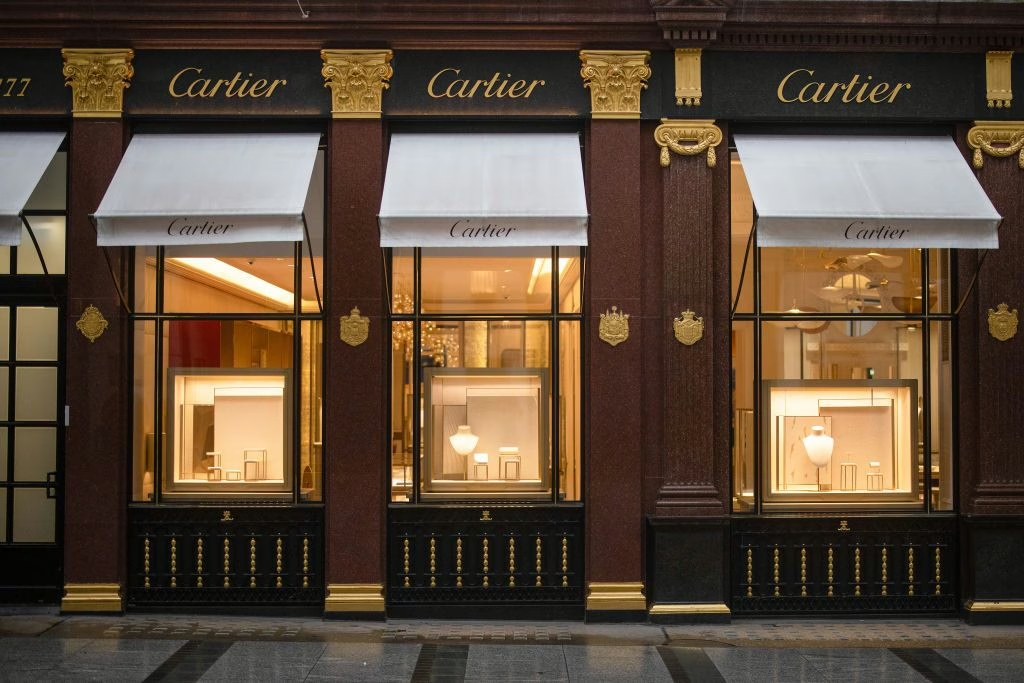Shares in Richemont jumped 15% on 16 January after the luxury group reported a strong holiday season, says Laure Guilbault in Vogue Business. Sales grew by 10% year on year in the fourth quarter of 2024. This not only marks a “return to growth” after a 1% decline in the previous quarter but may also be a “reassuring sign” for the wider luxury market, which has been “sinking deep into a downturn”. Other luxury stocks bounced too, with LVMH’s and Kering’s share prices each up by 7%.
While Richemont’s overall global sales grew by 10%, its US sales did even better, expanding by 22%, says Lex in the Financial Times. This suggests that an industry previously centred around handbags and focused on China is now driven instead by bling and America. “Old World luxury maisons have been pursuing their own American dream” by opening stores in the wider US away from traditional heartlands. And luxury has been “enjoying its own, gold-plated, Donald Trump bump”. With Trump’s policies set to leave “more money in the hands of already high spenders”, this boom should continue.
Is there hope for the luxury market after Richemont’s revenue boom?
Investors are right to be “excited” that Richemont’s “standout Christmas” means the US luxury market might be entering another “gilded age”, says Carol Ryan in The Wall Street Journal, especially since China “is still in the doldrums”. But while luxury stocks are up “across the board… not everyone will automatically benefit”. The “weak labels”, such as Burberry, Gucci’s owner Kering and Salvatore Ferragamo still “have a problem with lacklustre products that need revamping”. It won’t be clear until other brands report whether handbags and apparel are also in “recovery mode”.
Sign up to Money Morning
Don’t miss the latest investment and personal finances news, market analysis, plus money-saving tips with our free twice-daily newsletter
Don’t miss the latest investment and personal finances news, market analysis, plus money-saving tips with our free twice-daily newsletter
Those hoping that other brands, more focused on leather goods, can emulate the success of Richemont, which gets more than half its sales from jewellery, may be left disappointed, says Bloomberg’s Andrea Felsted. While “It” bags have been “must-have items” for the past 20 years, price rises have made jewellery look better value, with the result that many women “now prefer a bauble to a bag”. At the same time, Richemont’s two major brands, Cartier and Van Cleef & Arpels have done very well, with the former “coveted” and the latter becoming a “TikTok sensation”.
Investors who propelled shares in LVMH and Kering 7% higher need to realise that those companies make only a fraction of their sales from jewellery compared with Richemont, while they are also much more exposed to the falling Chinese market, says Yawen Chen on Breakingviews. Despite its overall success, even Richemont saw its sales in China fall 18% in the last quarter. As a result, those who are betting that LVMH and Kering will emulate Richemont’s success may instead be “clutching at very expensive straws”, leaving Richemont as “a lonely jewel in an otherwise dull sector”.
This article was first published in MoneyWeek’s magazine. Enjoy exclusive early access to news, opinion and analysis from our team of financial experts with a MoneyWeek subscription.

Leave a Reply